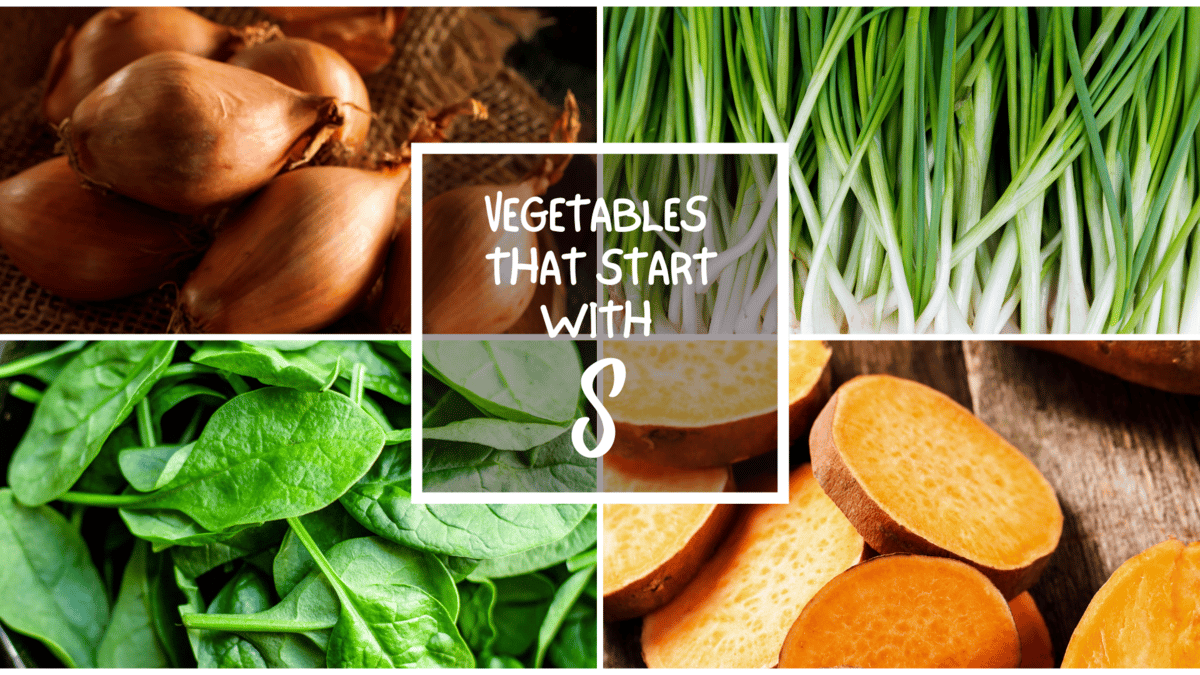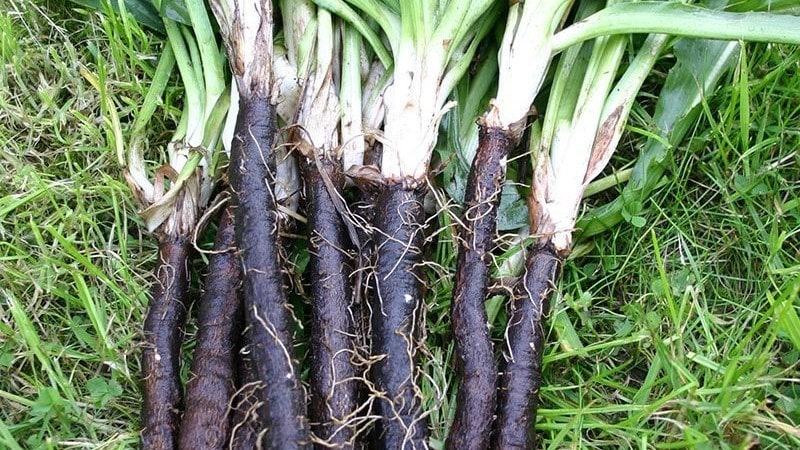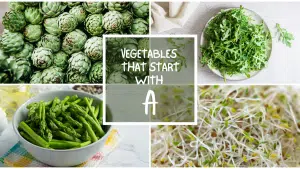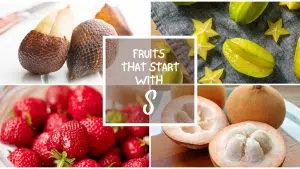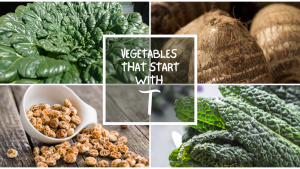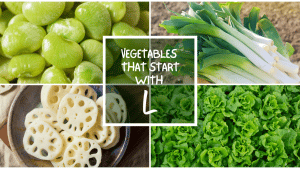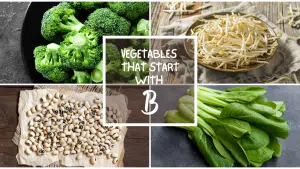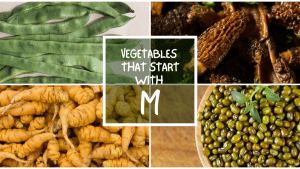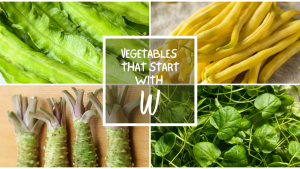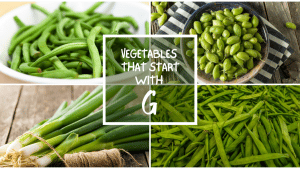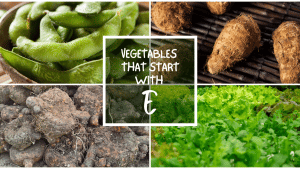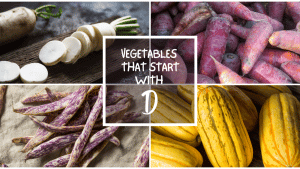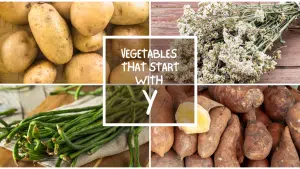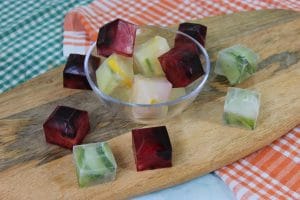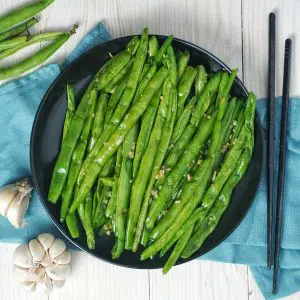All The Vegetables That Start With S
Important Note: When you buy through our links, we may earn a commission. As an Amazon Associate we earn from qualifying purchases. Content, pricing, offers and availability are subject to change at any time - more info.
Vegetables are essential to our lives because they help us perform our daily activities without disruptions. Most vegetables are a rich source of iron which ensures the efficient function of a human by transferring oxygen to every part of the body and for healthy skin and hair. This list of vegetables that start with the letter S is vital because it will increase your knowledge of the existing vegetables in the world and help you navigate well through both the familiar and unfamiliar vegetables beginning with the letter S.
You may need a list of vegetables starting with the letter S because it will broaden your diet, help you know their origin, where to buy them, how to cook them and understand the health benefits you can gain from eating them. The vegetables that start with the letter S include:
- Salsify
- Samphire Grass
- Scorzonera
- Sculpit
- Sea Beet
- Seagrape
- Sea Kale
- Sea Lettuce
- Shallot
- Skirret
- Soko
- Sorrel
- Soybean
- Spinach
- Scallion
- Swede
- Sweet Potato
- Salad Savoy
- Sierra Leone Bologi
- The Final Letter
Salsify
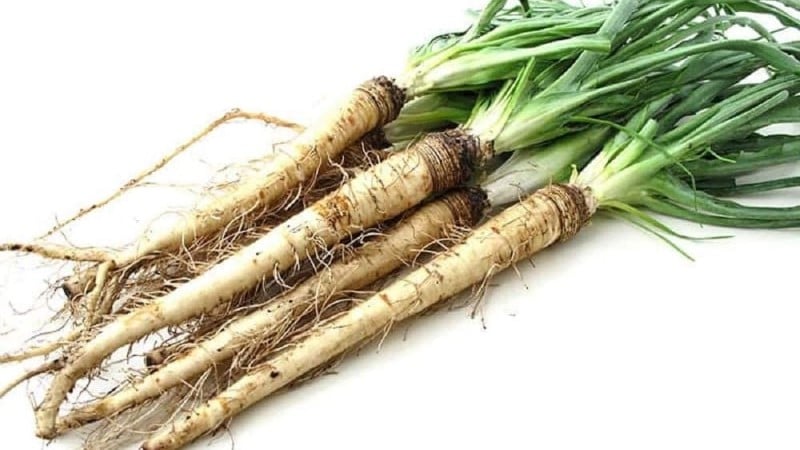
The scientific name of salsify is Tragopogon porrifolius. Salsify vegetable belongs to the Tragopogon genus and dandelion family. It is a vegetable that has low fat and is rich in carbohydrates. Salsify is also called the oyster plant.
The vegetable is a root vegetable commonly found in the united states and Europe. Salsify has a stick that is ugly and brown. The roots are used in preparing salads, and the older ones can be used to cook soup or stews. It has a delicious and creamy flavor. To prepare salsify, you can boil it, fry it, or mash it.
Samphire Grass
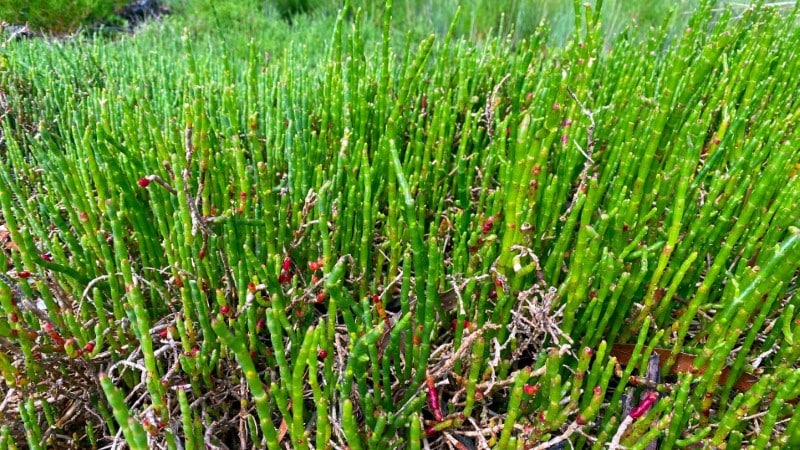
The scientific name of samphire grass is Salicornia europaea. This vegetable grows in the sea and has a sea-like taste. Samphire is salt tolerant. The vegetable has a crispy texture. There are two varieties of samphire grass, rock and marsh. Marsh samphire is often available while still fresh. Rock samphire is rarely available fresh because it has an unpleasant odor. Therefore, it is normally pickled to remove the unpleasant smell.
Samphire cannot last for long. Therefore you should buy it as you need. To refrigerate samphire for a few days, wrap it first. You can get it in supermarkets and some fish shops to purchase samphire grass. You can consume samphire grass raw in a salad or cook it through boiling, steaming, frying, or simmering in water. People prefer cooking it because of its salty taste. If you wish to eat raw samphire grass, rinse it well fast.
Consuming samphire grass has potential health benefits for its users, such as having anti-oxidant properties, performing ant-inflammatory activities, and protecting the nervous system.
Scorzonera
The scientific name of scorzonera vegetable is scorzonera hispanica. It belongs to the scorzonera family, the same family as dandelions and daisies. This vegetable is a taproot vegetable. The vegetable has thick black skin. Scorzonera vegetable is also called viper’s herb, Spanish salsify, black oyster plant, grass, black salsify, and serpent root.
Scorzonera vegetables originated from southern Europe. The vegetable thrives in soils with poor nutrients, rocky areas, dry pasture, and temperate zones. It is a rich source of fats, proteins, potassium, iron, sodium, phosphorus, calcium, and vitamin E. Consumption of scorzonera vegetables has potential health benefits to its users, such as stopping processes of cancers, assisting in the healing of wounds, and performing anti-microbial activities.
The main part of the scorzonera vegetable is consumed in the roots, but its flowers and leafy shoots are edible. They can be consumed either raw or after being cooked. The thick skin of the root cannot be consumed and thus should be removed before or after you cook them.
It appears that Scorzonera looks similar to the above vegetable which is Salsify, doesn’t it? Despite their similarity in appearance, they are not the same. Tragopogon porrifolius, often known as salsify, is a long, off-white root vegetable that has a mildly artichoke-like flavor. On the other hand, Scorzonera (Scorzonera hispanica) contains black roots that are longer and thin in appearance and have an oyster-like taste.
Sculpit
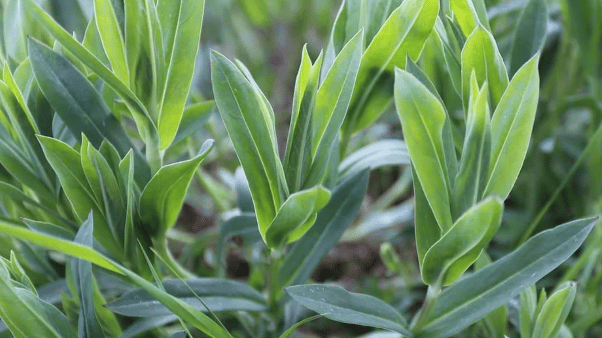
The scientific name of the sculpit is Silene inflate. Sculpt is a herb that has a green color. It is also called sculpit bladder campion. Sculpit originated from Italy. You can add sculpit to several dishes to add flavor. Sculpit is used as an ingredient in recipes such as salads, egg dishes, and risotto in Italy. The sculpt herb is commonly grown in Spain and Italy.
The vegetable is pretty easy to grow and is primarily used in Europe. It has thin leaves that grow easily. Sculpit has a unique taste that resembles a combination of arugula, radicchio, and tarragon. The taste is delicate and slightly bitter.
It has beautiful flowers that look like balloons and have pink and white shades. To buy sculpit, you can find them at local farmers’ markets and whole food supermarkets.
Sea Beet
The scientific name of sea beet is Beta vulgaris subsp. Maritime. Sea beet is also called wild spinach. It belongs to the Amaranthaceae family. Sea beet is a perennial plant whose leaves are shiny and dark green. You can eat the leaves of sea beet, both raw and cooked. Sea beet is native to Europe, southern Asia, and northern Africa coasts.
Sea beet is a wild ancestor of regular vegetables like sugar beet, beetroot, and swiss chard. The vegetable has a pleasant flavor and texture. You can enjoy sea bet raw or cooked. The vegetable cannot grow well in shades, and it needs moist but well-drained soil.
Seagrape

The scientific name of the sea grape vegetable is Coccoloba uvifera. It is also called bay grape. The vegetable is commonly found in the Caribbean and American beaches. Seagrape is a flowering species that belongs to the buckwheat family called Polygonaceae. You can enjoy the sea grape vegetable raw, fermented, or cooked.
Sea grape grows in clusters and is green. The vegetable is tolerant to wind, salt, and shade. The sea grape tree is also planted for ornamental purposes. It is used as an ingredient to make jellies, jams, and wine.
Sea Kale

The scientific name of sea kale is Crambe maritime. The halophytic flowering plant belongs to the crambe genus. The leafy green vegetable belongs to the Brassicaceae family. Sea kale is mostly grown in Europe and was first cultivated in Britain around the 18th century. Despite its name, sea kale is not grown in the sea. It is, however, grown in Europe’s coastal regions. The stems of sea kale are eaten like a vegetable. Apart from growing it for vegetable reasons, it can also be grown for decorating your home garden. Sea kale is also called scurvy grass and sea colewort.
Another name for sea kale is crambe. It is a salt-tolerant vegetable that mostly grows along coasts in Europe. Sea kale has close relations to the cabbage. The perennial vegetable has large and fleshy leaves with many white flowers. The sea kale leaves resemble glaucous collard. Its pods only have one seed in them.
Sea Lettuce
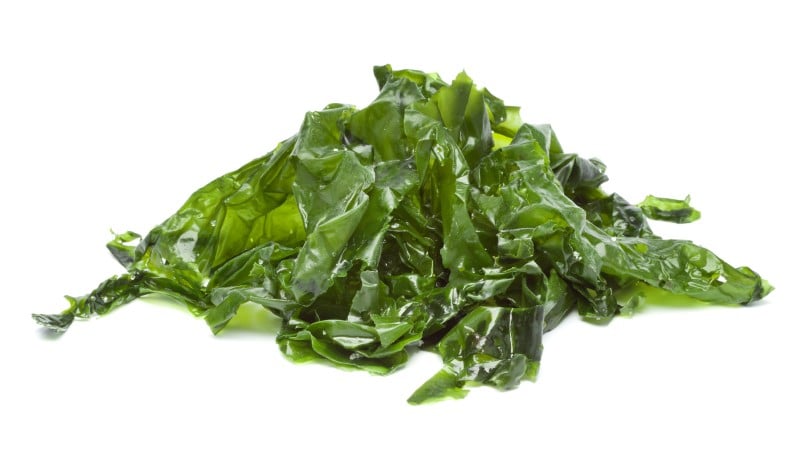
The scientific name of sea lettuce is Ulva Lactuca. It is an alga that is edible and green in color. Sea lettuce belongs to the Ulva genus and ulvaceae family. You can enjoy your sea lettuce raw or use it to add to your recipes to bring a distinct flavor. Sea lettuce has a dark green to green color and is flat. Sea lettuce is widely spread in countries such as America, the Caribbean, Africa, Europe, Asia, New Zealand, China, and Australia.
Sea lettuce can be used as an ingredient to make dishes like stew, soup, and salads when it is raw.
Shallot
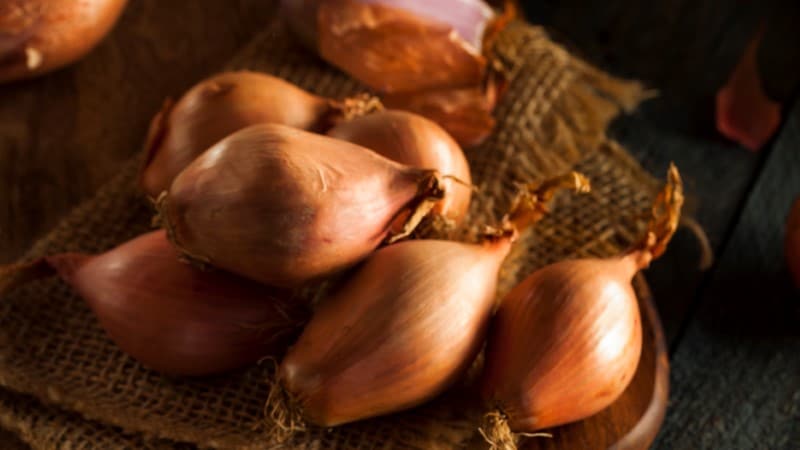
The scientific name of shallot is Allium cepa var. aggregatum. Shallot resembles an onion but is smaller in size and has close relations to clove, chive, and garlic. It is a variety of the onion botanically. The vegetable’s outer skin has a golden yellow and sometimes slightly red color. The inner flesh of shallot is off-white. The shallot vegetable grows in cluster cloves just like garlic. The use of shallot as an ingredient is fairly flexible. You can pickle them or fry them.
Shallot is native to southeast and central Asia. It is a rich source of fat, carbohydrates, dietary fiber, protein, manganese, phosphorus, and potassium.
Skirret
This is a root vegetable that also has edible stems. The scientific name of the skirret is Sium sisarum. It belongs to the Apiaceae family. The vegetable has long white roots that contain a sweet taste. The skirret vegetable can be enjoyed raw in salads or cooked in soups and stews. Skirret is remarkably resistant to many factors such as diseases, pests, and cold weather.
The perennial plant is also called skirwhit, skirwort, zuckerwuzel, and crummock. The skirret roots have a bright white color. They have a sweet flavor and an aromatic smell. Preparing a skirret is done the same way as parsnip and black salsify.
Soko
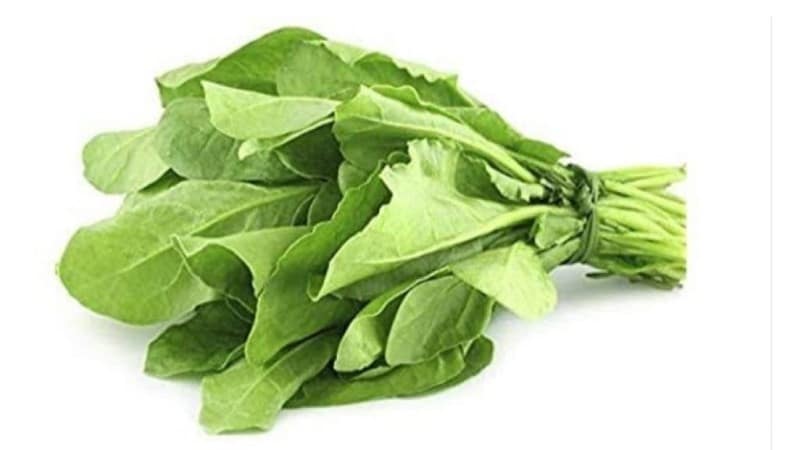
The scientific name of the Soko vegetable is Celosia argentea. Soko vegetable is also called Lagos spinach. It is eaten in areas like Africa and Southeast Asia. Whereas, some countries like India and china consider Soko vegetable a weed and do not consume it.
It is a rich source of nutrients like calcium. Soko vegetable is not popular in America, and therefore it is a little difficult to get it in local grocery stores and supermarkets.
Sorrel
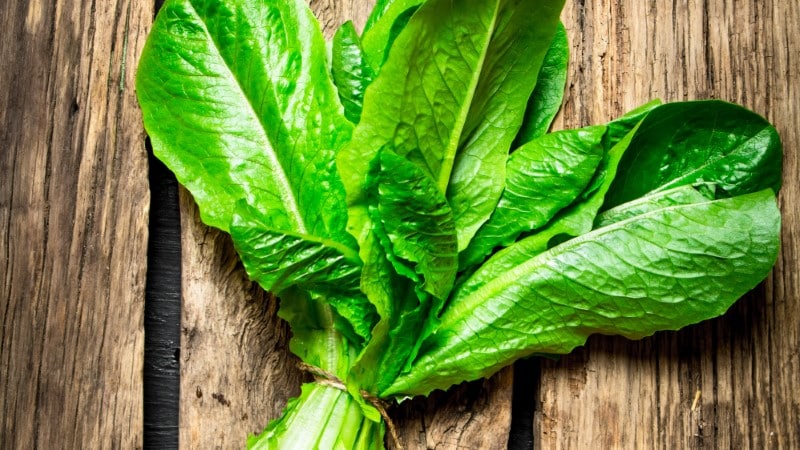
Sorrel is another vegetable that begins with the letter S. The scientific name of sorrel vegetable is Rumex acetosa. The perennial vegetable belongs to the Polygonaceae family. You can add sorrel to soups and salads or serve it as an appetizer. Sorrel vegetable has green leaves and a sweet flavor that is often compared to the taste of wild strawberries. Intake of sorrel has health benefits for its users, like performing anti-microbial activities.
Soybean
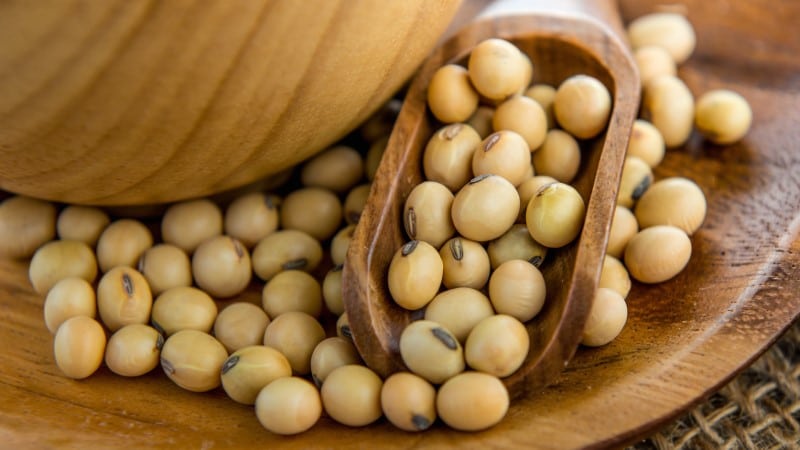
The scientific name of soybeans is Glycine max. Soybeans are native to and widely grown in East Asia.
The vegetable offers vegetarians high levels of proteins. Soybeans are the most famous type of beans globally. It is used as an ingredient to make soy milk and tofu.
Soybeans are a staple for vegan and vegetarian diets. Eating soybean has many health benefits to the consumers, such as reducing risks of cancers like prostate and breast cancer, inhibiting coronary heart diseases, and generally improving skin health.
To buy soybeans is very easy in America. They are available in most grocery stores, whole food supermarkets, and online stores.
Spinach

The scientific name of spinach is Spinacia oleracea. Spinach is also called a superfood. Its leaves vary in shape and size. Spinach is a rich source of nutrients like calcium, potassium, carbohydrates, iron, manganese, and vitamin C.
You can use spinach as an ingredient to make a salad, sandwiches, and even smoothies. Spinach can also be enjoyed fresh or freeze it for future use. The vegetable has many uses in recipes if you allow yourself to be creative when cooking it.
When you eat spinach, you can enjoy multiple health benefits such as performing anti-proliferation activities, anti-inflammatory activities, and anti-oxidative activities. It is quite easy to find spinach in the united states. You can buy spinach at online stores, supermarkets, and local grocery stores.
Scallion
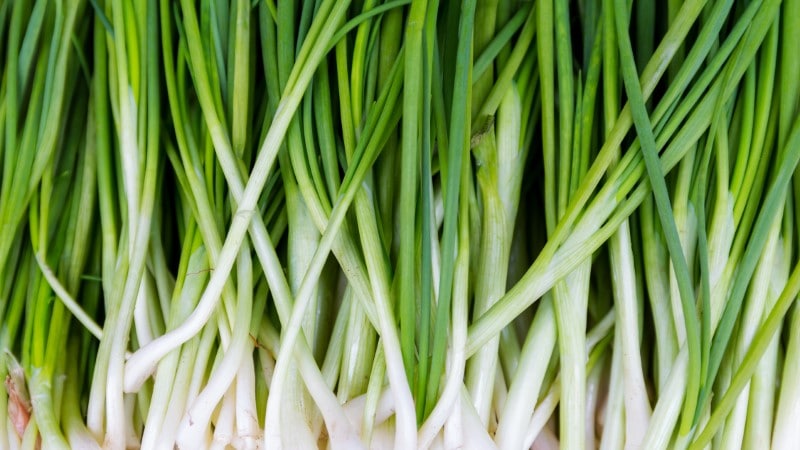
The scientific name of the scallion is Allium cepa. Scallion is also known as spring onion. This vegetable resembles an onion but has a milder flavor. Just like onions, scallion is chopped and acts as a vegetable that can be added to recipes such as salsa and salads.
Scallion has close relations to leeks and shallots. It has a similar piquant flavor to shallots and leeks but is milder. The scallion has long green leaves that grow out of the bulbs. You can use scallion as an ingredient to prepare stir fry, soup, and tofu.
Eating scallion vegetables has many health benefits for its consumers, such as chemoprevention of some cancers like colon cancer, anti-inflammatory activities, and general anti-tumor activities.
Swede
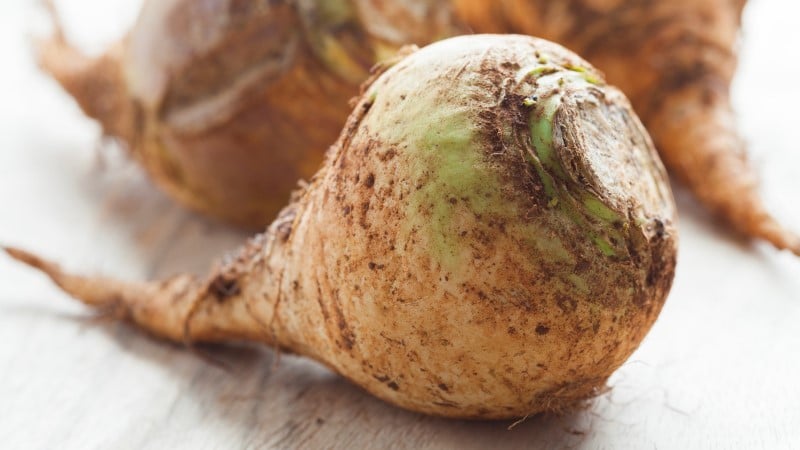
The scientific name of swede is Brassica napus L. var. napobrassica. Swede is also called Swedish turnip, neep, Sweden, and rutabaga. The vegetable originated from crossing between turnip and cabbage. It is a root vegetable with edible leaves.
Eating swede vegetables is beneficial to individuals who are health consious, such as improving digestion, reducing the risk of some cancers, and anti-oxidative activities.
Sweet Potato
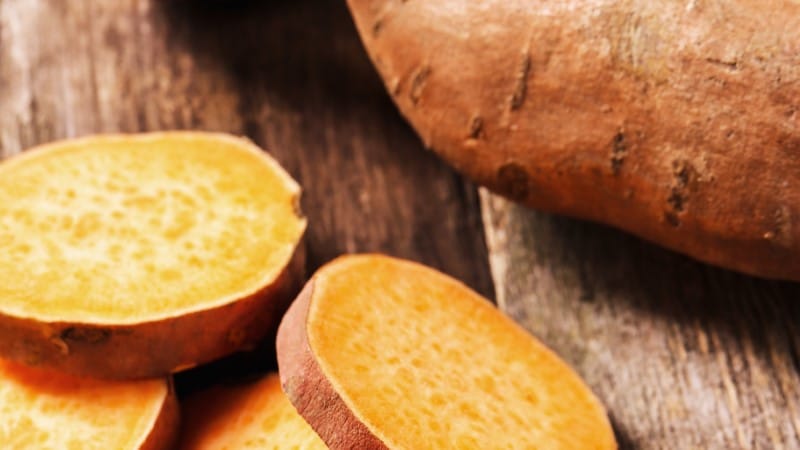
The scientific name is a sweet potato is Ipomoea batatas. Sweet potatoes usually grow on a dicotyledonous plant found in the bindweed family. Sweet potato is a bigger and sweeter root vegetable than the usual potatoes. Also, as compared to the regular potatoes, they have brown thinner skin. The sweet potatoes come in various colors for the flesh and skin. It is found in the ipomoea genus and is native to America’s tropical regions.
Sweet potato originated in America over 5000 years before. It is a rich source of fat, protein, dietary fiber, calcium, manganese, potassium, sodium, iron, and vitamins. People who eat sweet potatoes have the chance of gaining health benefits such as anti-inflammatory effects, anti-diabetic effects, and anti-oxidative activities.
Salad Savoy
Salad savoy is a vegetable beginning with the letter S with the scientific name of Brassica oleracea. It is a unique vegetable with a white and violet head that looks like a flower. The vegetable has a sweet taste close to that of broccoli and cabbage. It has a sweet and earthy flavor. Salad savoy belongs to the cabbage family. The vegetable makes a perfect alternative to red and green cabbage. The vegetable has shades of white and violet that result from cross-pollination and natural breeding.
Salad savoy is a rich source of vitamin A, C, and K, iron, fiber, and calcium. You can use the salad savoy as an ingredient to make pizza, stir-fries, and soups. To store the salad savoy for several days, you can place it in the refrigerator.
If you wish to buy salad savoy, you can find it in most grocery stores, online shops, and whole-food supermarkets in the united states.
Sierra Leone Bologi
The scientific name of Sierra Leone bologi is Crassocephalum biafrae. It belongs to the Asteraceae family. This vegetable is commonly found in Africa and with leaves resembling spinach. The vegetable is usually grown on a trellis because it is a vine. It is a shade-tolerant vegetable. You can enjoy the steamed leaves of a sierra leone bologi. Another name of sierra leone bologi is worowo or yankonfeh.
Sierra leone bologi is a tropical herb that climbs on trees and has succulent leaves, white flowers, and long leaf stalks. It cannot withstand drought. You can enjoy sierra leone bologi in recipes such as sauces, stews, and soups.
The vegetable, when eaten, can have potential health benefits of helping heart problems, sore eyes, and rheumatic pain.
The Final Letter
The glossary listed is all there is to understanding the vegetables that start with the letter S. The extensive list of vegetables beginning with the letter S will broaden your knowledge of vegetables and diversify your diet. This extensive list will assist you in knowing vegetables that start with the letter S, simply by their appearance, taste, or smell, and you will not be confined to describing vegetables based on their names only. This article will also help you to know the native places of the vegetables, their scientific names, where you can purchase them, their nutritional values, their flavor, their aroma, recipes you can use them in, and, more importantly, the health benefits you can enjoy from eating these vegetables.
